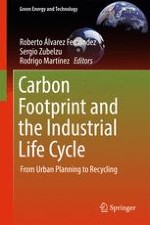2017 | OriginalPaper | Buchkapitel
11. Energy Innovation in the Environmental Kuznets Curve (EKC): A Theoretical Approach
verfasst von : Daniel Balsalobre-Lorente, Muhammad Shahbaz, José Luis Ponz-Tienda, José María Cantos-Cantos
Erschienen in: Carbon Footprint and the Industrial Life Cycle
Aktivieren Sie unsere intelligente Suche, um passende Fachinhalte oder Patente zu finden.
Wählen Sie Textabschnitte aus um mit Künstlicher Intelligenz passenden Patente zu finden. powered by
Markieren Sie Textabschnitte, um KI-gestützt weitere passende Inhalte zu finden. powered by
